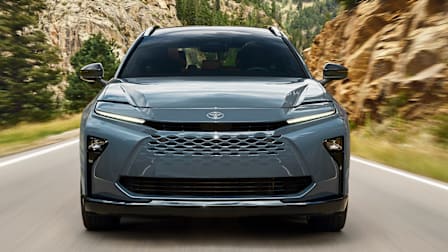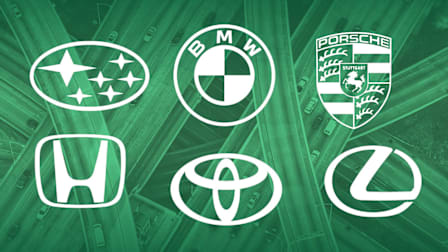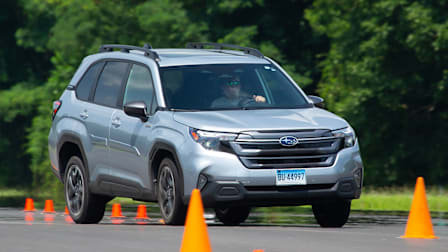Best American-Made Cars, According to Consumer Reports' Recent Tests
Discover where CR's recent test cars were made and the top-ranked cars that were built in the U.S.
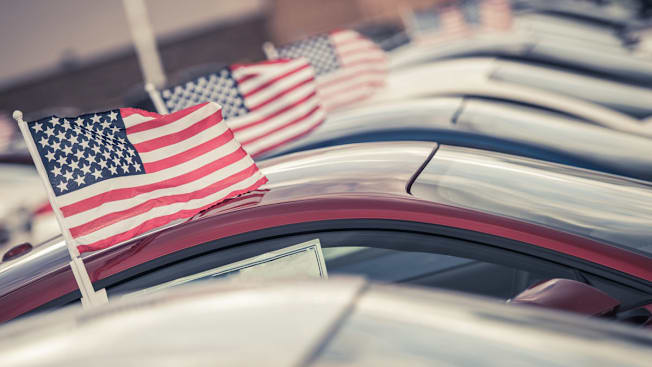
Ever wonder where cars are built? Decades ago, car manufacturing took place in plants located in the country where the company was based. American brands like Ford and General Motors built most of their cars in the U.S., Japanese brands like Honda and Toyota built theirs in Japan, and so on. But today, the auto industry is truly global, with thousands of parts sourced internationally and brands with plants around the world.
Import tariffs may affect how and where cars are built, and how much consumers in the U.S. can expect to pay for a new vehicle. In addition to providing some trivia for owners, knowing where a specific car is assembled could be relevant for future buying decisions. That’s why we looked at our fleet of test vehicles to find out where they were built. (Learn more about car buying and tariffs, and discover where tires are made.)
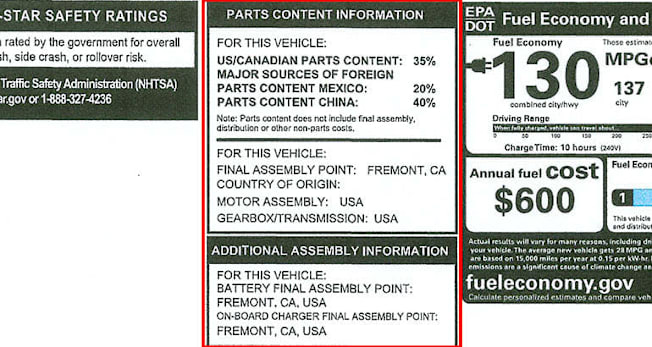
Photo: Consumer Reports Photo: Consumer Reports
Where CR’s Test Cars Were Built
This is the breakdown of where 78 of our test cars from the 2024 and 2025 model years were built. We reviewed each car’s original window sticker to determine its location of final assembly.
| Country | Number of Cars |
| U.S. | 25 |
| Mexico | 15 |
| Germany | 11 |
| Japan | 11 |
| Korea | 9 |
| Italy | 2 |
| China | 2 |
| United Kingdom | 1 |
| Belgium | 1 |
| Canada | 1 |
Many of our test cars were built in the country where that brand has its headquarters—a BMW built in Germany or a Hyundai built in South Korea. But even in those cases, the manufacturing process involves multiple countries, with major components (like powertrains) being shipped across borders and oceans. The California-built Tesla Model 3 is an international product. According to the window sticker on our 2025 example, 40 percent of its parts content is imported from China. Meanwhile, the Tesla Model Y was built in Austin, Texas, with 70 percent U.S./Canada parts and 20 percent from Mexico.
Some cars, however, rolled out of factories far from their brands’ main offices. Among the international twists in Consumer Reports’ fleet:
• Our Lincoln Nautilus hybrid and Volvo EX30 were built in China.
• Our Buick Envista and Chevrolet Trax were built in South Korea.
• Our Volvo C40 was built in Belgium.
• Our BMW 330e PHEV, Honda Prologue, and Volkswagen Taos were built in Mexico.
• Our Mini Cooper S was built in the United Kingdom, but our Mini Countryman gas and EV SUVs were built in Germany.
Many of the models that come from unlikely places are the result of corporate parentage and partnerships. For example, historically British Mini is owned by BMW and has some of its products built alongside BMW models in Germany. Likewise, Honda partnered with General Motors on its first electric SUVs, and both companies share factories. (Learn more about who owns which car brands.)
The Volvo C40’s origin is even more complicated. It’s built in Ghent, Belgium, with 45 percent of its parts coming from Poland. And the Swedish Volvo brand is now a part of the China-based Zhejiang Geely Holding Group.
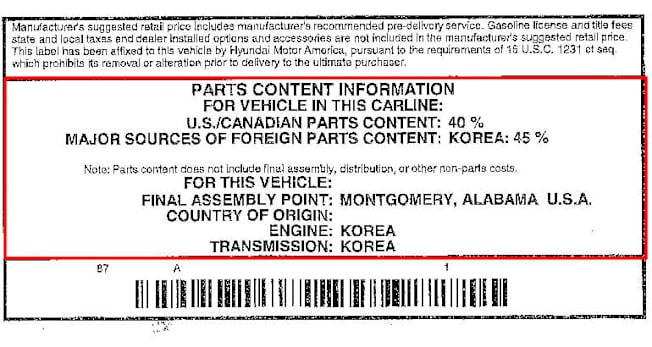
Photo: Consumer Reports Photo: Consumer Reports
Recently Tested American-Made Cars
These cars are CR Recommended and built in the U.S., and they recently went through our formal testing process on both public roads and at our closed track. They’ve earned high Overall Scores, which factor the results from CR’s road test, reliability, owner satisfaction, and safety. They’re presented in alphabetical order.
We will add to this list as we purchase and evaluate more vehicles. The Cadillac Vistiq (built in Spring Hill, Tenn.), Honda Passport (Lincoln, Ala.), Hyundai Ioniq 9 (Ellabell, Ga.), and Tesla Model Y (Austin, Tx.) are being tested. Click those names to read our initial first-drive reviews.

















